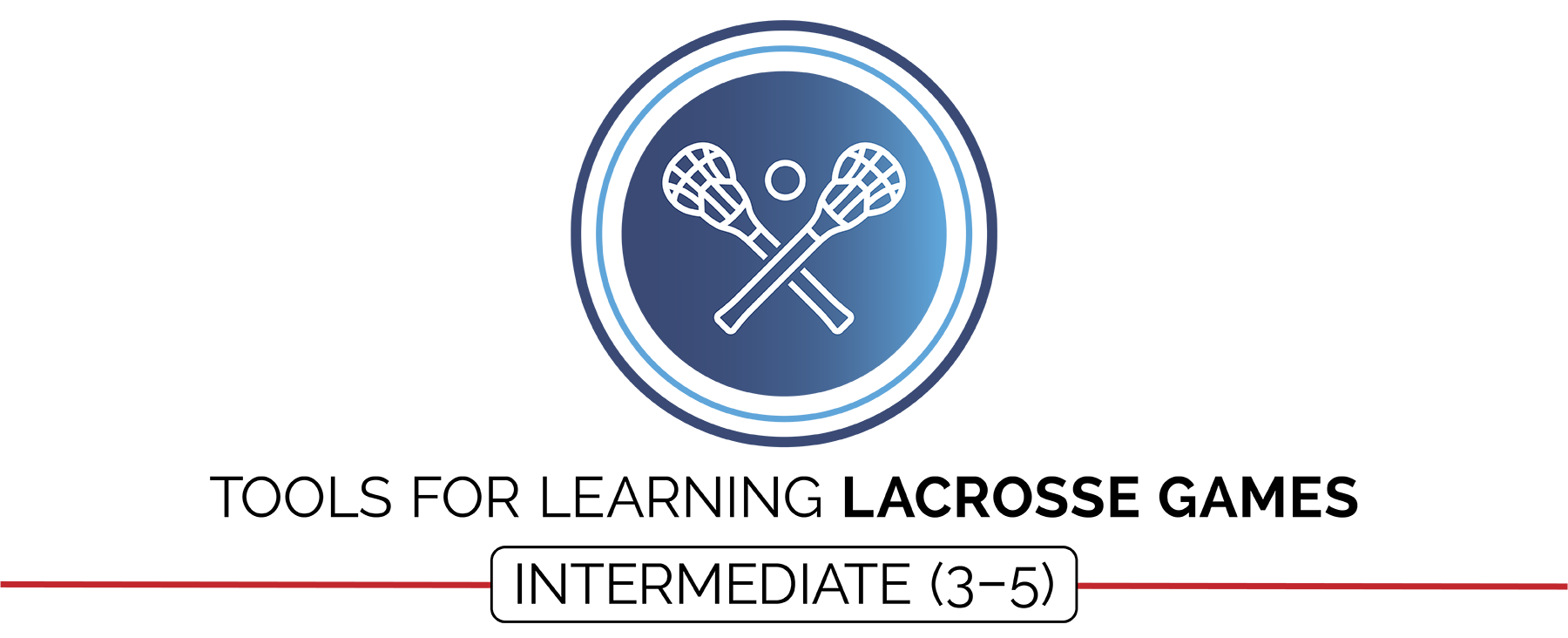Created by: Aaron Hart, Joel White, Brian Devore, Dan Law, Ben Connery, Colin Arvanitakis
Special Contributions: Rich Barnes, Bob Edwards, Paige Morrison, Jamie Brown, Victor Spadaro, Kate Darpino, Angelica Fox, and Deedi Brown
Design: Jennifer Truong
Lacrosse is one of the fastest-growing sports in the United States. Interestingly, it’s also one of the oldest, with evidence of its origins dating back to 1100 AD. The current version of the game is a combination of the variations played by the people native to North America (Canada and the US) with European influences. This module was created as an introduction to the sport with a focus on basic ballcontrol skills (cradling, scooping, catching, and throwing).
Module Documents
Complete Module Packet:
Module Overview:
Required Materials:
All Module Activities:
Sample Lesson Plan:
Academic Language Cards:
Hand Placement Chart:
Lax Skill Cue Chart:
Station Cards:
Universal Design Adaptations:
Activity Plans
Yum Yum Yum:
Clean Your Yard:
Musical Lax:
Target Practice:
Lax Tag:
Sharks In The Sea:
Partner Toss & Catch:
Lacrosse Basketball:
Lacrosse Stations:
Assessments
Self-Assessment Worksheet:
Holistic Performance Rubric:
Holistic Dual Performance Rubric:
Academic Language Quiz:
Teacher Evaluation
Teacher Self-Evaluation/Reflection Guide:
Can’t see the file links? Register for FREE today to access all of the modules. SIGN UP HERE
National Standards and Outcomes Focus for Lacrosse
Standard 1.Demonstrates competency in a variety of motor skills and movement patterns.
- Standard 1 [E6.3-4] Performs a sequence of locomotor skills, transitioning from one skill to another smoothly/without hesitation (3); Combines traveling with manipulative skills of dribbling, throwing, catching, and striking in teacher- and/or student-designed small-sided practice tasks (4).
- Standard 1 [E16.3-4] Catches a gently tossed hand-sized ball from a partner, demonstrating four of the five critical elements of a mature pattern (3); Catches a thrown ball above the head, at chest/waist level, and below the waist using a mature pattern in a non-dynamic environment (4).
- Standard 1 [E26.4-5] Combines traveling with the manipulative skills of dribbling, throwing, catching, and striking in teacher- and/or student designed small-sided practice task environments (4); Combines manipulative skills and traveling for execution to a target (5).
Standard 2.Applies knowledge of concepts, principles, strategies and tactics related to movement and performance.
- Standard 2 [E1.3,4a,5] Recognizes the concept of open spaces in a movement context (3); Applies the concept of open spaces to combination skills involving traveling (e.g., dribbling and traveling) (4a); Combines spatial concepts with locomotor and non-locomotor movements for small groups in game environments (5).
- Standard 2 [E2.3-5] Recognizes locomotor skills specific to a wide variety of physical activities (3); Combines movement concepts with skills in small sided practice tasks, gymnastics, and dance environments (4); Combines movement concepts with skills in small-sided practice tasks/games environments, gymnastics, and dance with self-direction (5).
Standard 3.Demonstrates the knowledge and skills to achieve and maintain a health-enhancing level of physical activity and fitness.
- Standard 3 [E2.3-5] Engages in the activities of physical education class without teacher prompting (3); Actively engages in the activities of physical education class, both teacher-directed and independent (4); Actively engages in all the activities of physical education (5).
- Standard 3 [E6.3-5] Identifies foods that are beneficial for pre- and post physical activity (3); Discusses the importance of hydration and hydration choices relative to physical activities (4); Analyzes the impact of food choices relative to physical activity, youth sports & personal health (5).
Standard 4. Exhibits responsible personal and social behavior that respects self and others.
- Standard 4 [E6.3-5] Works independently & safely in physical activity settings (3); Works safely with peers & equipment in physical activity settings (4); Applies safety principles with age-appropriate physical activities (5).
Standard 5. Recognizes the value of physical activity for health, enjoyment, challenge, self-expression, and/or social interaction.
- Standard 5 [E2.3-5] Discusses the challenge that comes from learning a new physical activity (3); Rates the enjoyment of participating in challenging and mastered physical activities (4); Expresses the enjoyment and/or challenge of participating in a favorite physical activity (5).

